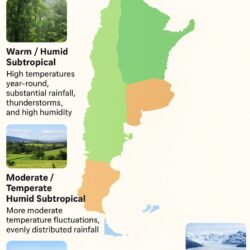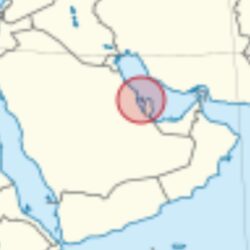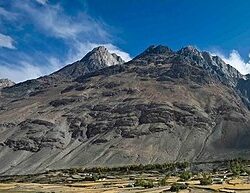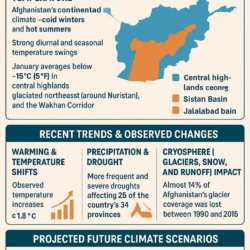The White Sea, located in northeastern Russia, is one of the coldest bodies of water on the planet. It is connected to the Barents Sea through the Kola Strait and is known for its frigid temperatures, strategic significance, and unique seasonal transformations.
1. Geography and Climate
- The White Sea is surrounded by the Kola Peninsula, Arkhangelsk Oblast, and Karelia.
- Its waters rarely exceed 10°C (50°F), making it one of the coldest seas in the world.
- In winter, the sea can completely freeze, forming a thick ice layer that allows people and even vehicles to traverse its surface.
2. Strategic and Historical Importance
- The White Sea has long been a crucial maritime route for Russia.
- During the Soviet era, it played a key role in military activities, submarine operations, and the transportation of natural resources.
- The White Sea-Baltic Canal, built in the 1930s, connects it to the Baltic Sea, enhancing Russia’s naval and trade capabilities.
3. Ice Roads and Winter Adaptations
- When frozen, ice roads are created, allowing transportation of goods and supplies.
- These ice highways are critical for remote communities, providing essential connections that do not exist in warmer months.
- In some areas, ice fishing and winter tourism have also developed as seasonal activities.
4. Marine Life and Ecosystem
- Despite its extreme climate, the White Sea hosts a variety of marine species, including beluga whales, seals, cod, and herring.
- Its isolated environment and low human population have helped preserve its unique Arctic ecosystem.
A Frozen Wonder of the Arctic
The White Sea remains a mystical and strategic part of Russia’s Arctic region, offering a blend of natural beauty, extreme survival conditions, and historical significance.
Frozen Maritime Routes: The Arctic’s Icy Highways
While the White Sea is one of the coldest seas in the world, it is not the only frozen maritime route that has played a significant role in global navigation. The Arctic Ocean and its surrounding seas have historically been both barriers and pathways for exploration, trade, and survival.
1. The Northern Sea Route (NSR): Russia’s Arctic Highway
One of the most important frozen maritime routes is the Northern Sea Route (NSR), which runs along the Arctic coast of Russia, connecting Europe to Asia through icy waters.
Key Facts About the NSR
✅ It is one of the shortest routes between Europe and Asia, reducing travel time by about 30–40% compared to the Suez Canal.
✅ Ships using this route must have icebreaker escorts to navigate safely through frozen waters.
✅ Due to global warming, parts of the NSR are becoming ice-free for longer periods, making it more accessible for international trade.
✅ Despite its potential, harsh weather, ice floes, and lack of infrastructure make it a challenging route.
2. The Northwest Passage: Canada’s Legendary Ice Route
On the other side of the Arctic, the Northwest Passage (NWP) runs through the Canadian Arctic Archipelago, offering an alternative route between the Atlantic and Pacific Oceans.
Challenges of the Northwest Passage
🚢 The passage is extremely unpredictable, with ice conditions changing rapidly.
🚢 Unlike the NSR, Canada has fewer icebreaker ships, making navigation riskier.
🚢 Historically, explorers like John Franklin attempted to navigate the passage but were met with tragedy due to the harsh climate.
However, as Arctic ice melts, the Northwest Passage is becoming more navigable, sparking interest from global shipping companies and governments.
3. The Polar Silk Road: China’s Arctic Ambitions
China has introduced the concept of the “Polar Silk Road,” aiming to develop Arctic trade routes as part of its Belt and Road Initiative.
Why is China Interested in the Arctic?
🔹 Access to untapped natural resources, including oil, gas, and rare minerals.
🔹 Strategic trade advantages—China sees the Arctic as a way to bypass traditional shipping lanes.
🔹 Scientific and research opportunities—China has established Arctic research stations to study climate change and navigation.
This increased Arctic activity has led to debates over sovereignty, environmental risks, and international regulations.
4. Ice Roads: Frozen Highways for Transport
Beyond maritime routes, ice roads play a crucial role in connecting remote Arctic communities.
🚛 Russia’s Ice Roads: During winter, many regions of Siberia rely on frozen rivers and lakes as highways for transporting goods.
🚛 Alaska’s Dalton Highway: While not a true ice road, this famous Arctic road remains operational even in extreme cold.
🚛 Canada’s Ice Roads: The Tibbitt to Contwoyto Winter Road is one of the longest ice roads in the world, built to support mining operations.
These roads are only usable in winter when ice is thick enough to support heavy trucks, making them temporary but essential for Arctic logistics.

The Future of Frozen Routes
As the Arctic changes, frozen maritime routes will become increasingly important for global trade, resource extraction, and geopolitical strategy. Countries like Russia, Canada, the U.S., and China are already investing in infrastructure, icebreakers, and new policies to adapt to this evolving environment.












